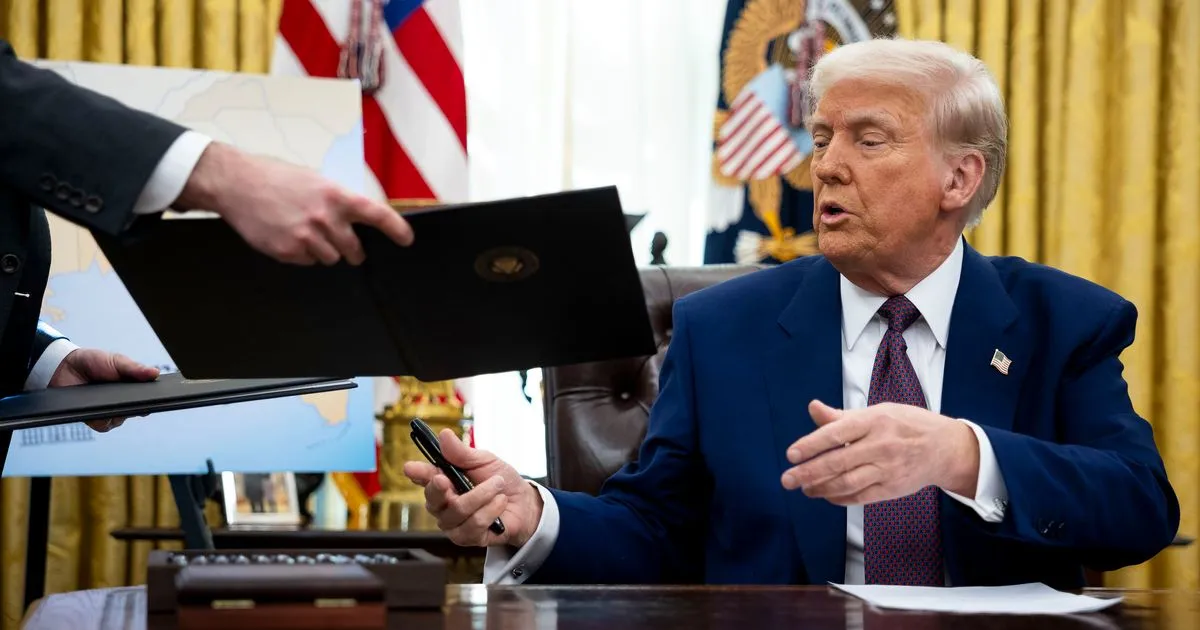
Former President Donald Trump and his congressional allies are grappling with a significant fiscal arithmetic issue that has not yet fully registered with debt-and-deficit hawks, financial markets, and the general public. Trump has made a promise to extend the tax cuts he championed during his first term, a move that his party’s donor base strongly supports. However, extending these tax cuts could cost a staggering $4.5 trillion over the next decade if made permanent. When factoring in interest costs, this could add an alarming $5.4 trillion to the national debt, according to the business-friendly Tax Foundation.
While tax cuts often seem appealing to voters, a recent USA Today–Suffolk poll indicates that the public may prefer Congress to prioritize fiscal responsibility first. The poll conducted just before Trump took office revealed that a majority, 53%, believed Congress should focus on reducing the federal budget deficit, even if it meant forgoing the extension of tax cuts. In contrast, only 28% felt that extending tax cuts was worth increasing the deficit.
Interestingly, enthusiasm for tax cuts appears to be modest even among Republicans. According to the same survey, 46% prioritized cutting taxes, while 38% emphasized the importance of curbing the deficit. This sentiment highlights a growing concern among voters, across party lines, that wealthy individuals and corporations are not contributing their fair share to the tax burden, especially given the benefits from the 2017 tax cuts.
On the 2024 campaign trail, Trump has reiterated his commitment to further tax cuts, which resonate with certain voter demographics. Proposed measures include eliminating federal income taxes on tips, overtime pay, and Social Security benefits. However, the Committee for a Responsible Federal Budget estimates that these proposed tax cuts could cost an additional $5 trillion.
Moreover, Trump is advocating for increased federal income-tax deductions for state and local tax expenditures, which could add another $1.2 trillion to the fiscal burden. Balancing these promises without exacerbating the federal budget deficit poses a significant challenge, especially in light of the Trump-GOP push for increased spending on national defense and border security, priorities reflected in recently passed budget resolutions.
Despite the challenges, congressional Republicans and the Trump administration agree on the necessity of domestic spending cuts that would not contradict Trump's pledges regarding Social Security, Medicare, and potentially Medicaid benefits. Republicans are also exploring ways to generate savings from federal bureaucracy, although these measures are becoming increasingly unpopular.
In a bid to address the fiscal gap, Trump has proposed a controversial solution: tariffs. Despite resistance from conservative and business sectors, there is a growing interest among GOP leaders in incorporating revenue from new tariffs into their legislative framework. This strategy aims to present a multitrillion-dollar domestic policy bill as deficit-neutral. Reports from Politico indicate that Speaker Mike Johnson and Senate Majority Leader John Thune discussed this approach during a recent White House meeting.
While this tariff-based strategy may assist with fiscal calculations, it poses significant political risks. Although Trump regards tariffs as a beneficial revenue source, public opinion is less favorable. While there is support for tariffs on China, tariffs on goods from Canada, Mexico, and Europe do not enjoy the same backing. Additionally, polls indicate that a majority of Americans believe that increased tariffs will lead to higher consumer prices, countering Trump's assertion that these costs would be borne by foreign entities.
Given the heightened sensitivity among Americans regarding the cost of living—a pivotal issue that contributed to Trump's return to the presidency in 2024—this tariff strategy may be particularly perilous. Furthermore, if tariffs succeed in compelling foreign concessions or encouraging companies to relocate operations to the U.S., the anticipated revenues may not materialize. Conversely, if tariffs do generate revenue, it is likely to come from American consumers facing inflated prices for both imported and domestic goods.
Ultimately, while tariffs may seem like a solution to the Republican desire for offsets to tax cuts, they may not provide the necessary fiscal relief. Over the long term, the reliance on tariffs could reinforce the perception that Trump is shifting from progressive income taxes to regressive levies, impacting all consumers. As the political landscape evolves, Trump and his congressional allies must navigate these complex fiscal and public sentiment challenges to realize their tax policy ambitions.